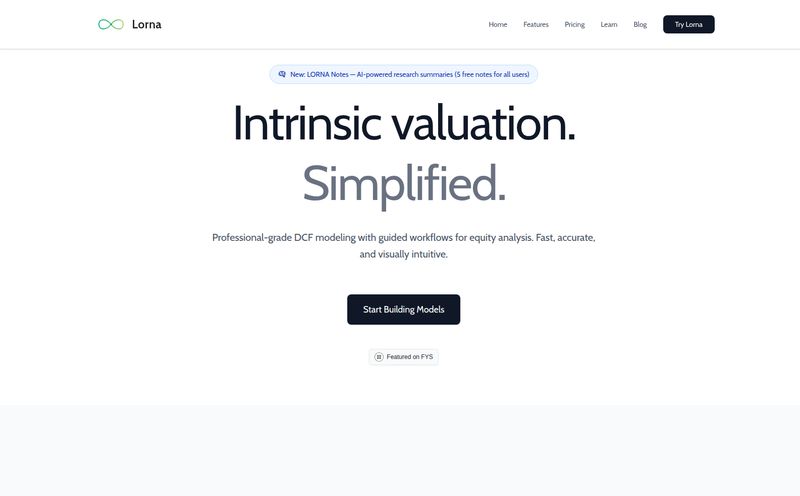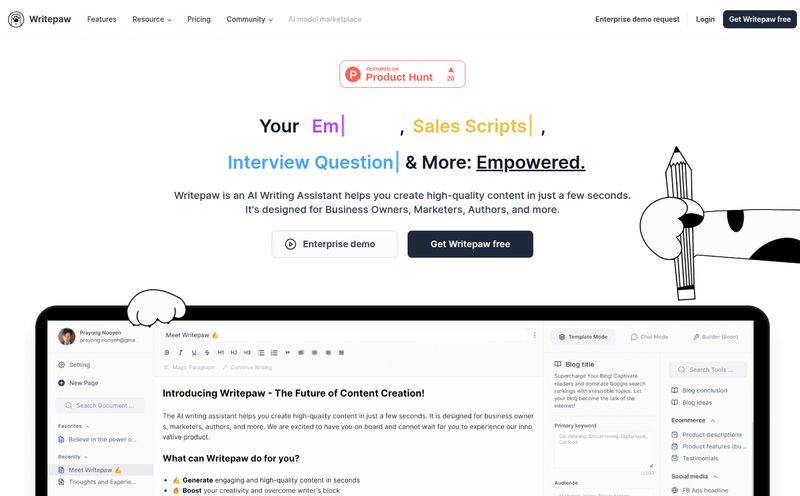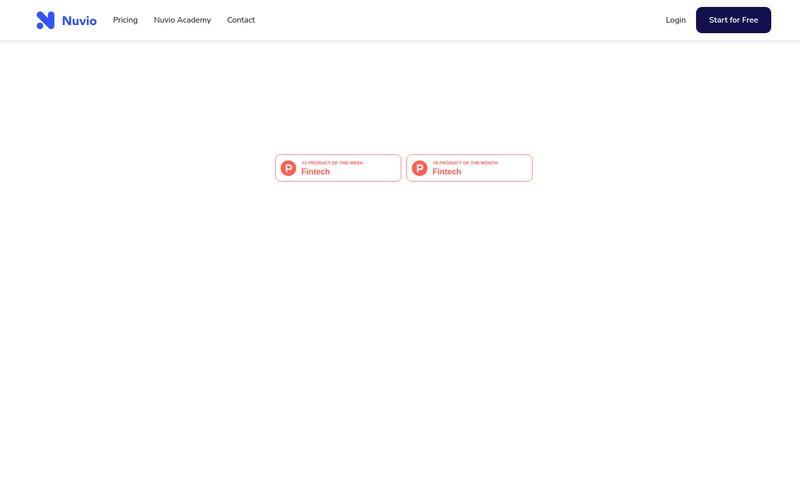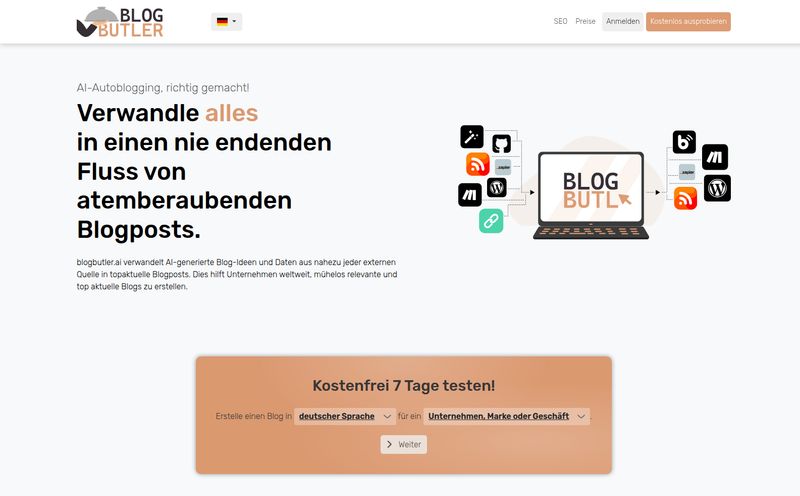How many of you have opened up Google Analytics, stared at the wall of charts and numbers, and just… closed the tab? I know I have. We’re all supposed to be “data-driven,” but most analytics platforms just dump a truckload of data on our doorstep and expect us to build a mansion. It's exhausting. We spend more time trying to figure out what we’re looking at than actually improving our websites.
It’s a classic case of data paralysis. Especially since the whole GA4 switchover, I’ve heard more groans from my fellow SEOs and marketing managers than ever before. We have all this information, but very little actual insight. What does a 12% bounce rate on a specific page even mean? What do I do about it?
That's the hamster wheel I've been on for years. So when I stumbled upon a tool called Flowpoint, my professional skepticism was immediately duking it out with a tiny flicker of hope. An AI-powered analytics agent? That promises reports and actionable recommendations in minutes? Color me intrigued.
So, What is Flowpoint, Really?
Okay, cutting through the marketing-speak. Flowpoint isn't just another dashboard to add to your collection. Think of it less as a complex analytics suite and more like a consultant you have on-demand. Its entire purpose is to connect the dots that we often miss. It uses AI to analyze your website's user behavior and doesn't just show you what's happening, it tells you why it might be happening and how to fix it.
Instead of you having to manually create funnels, sift through heatmaps, and guess why users are dropping off, Flowpoint aims to do that heavy lifting for you. It automatically spots the leaks in your conversion bucket—be it a technical glitch, a confusing UX element, or a piece of content that just isn't landing—and prioritizes them based on impact. It’s like having a tiny, hyper-efficient data scientist living in your browser, whose only job is to make your website better.
How Flowpoint Works: Your AI Analytics Team on Autopilot
The process itself feels refreshingly straightforward. They’ve boiled it down to a few steps that make a lot of sense, moving from broad data to specific actions without the usual headache.
It starts by hooking into your data, typically Google Analytics, to get that foundational knowledge. Then, you tell it what you care about. Are you an e-commerce store focused on checkout completions? A SaaS company looking for more demo requests? You define the report. From there, Flowpoint uses what it calls “Agent Teams” to analyze performance, find friction points, and generate a report. And we're talking minutes, not days. The best part? The report doesn't just say “user drop-off is high here.” It offers concrete, AI-powered recommendations. Things like “The CTA button on this page has low visibility, consider changing its color” or “This form field is causing errors for 15% of users.” That’s the kind of stuff you can actually do something with.
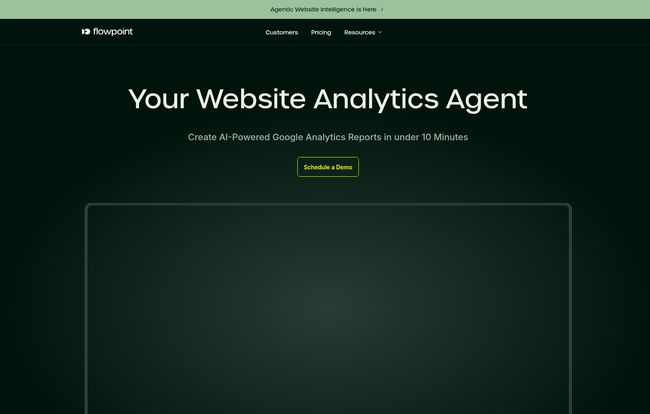
Visit Flowpoint
And if the AI’s first pass isn’t quite right? You can either tweak the parameters manually or just… ask the AI. You can refine the report by having a conversation with it, which is a wild concept for anyone used to the rigid, one-way street of traditional analytics.
The Features That Actually Matter
Any tool can boast a long list of features. But as a professional who's seen it all, I only care about the ones that save me time and make me more money. Flowpoint has a few that really stand out.
AI-Powered Recommendations for Everything
This is the core of it all. Getting specific, actionable advice for technical SEO, UX/UI improvements, and even content tweaks is a game-changer. I’ve spent countless hours in my career manually reviewing user session recordings to find the one little bug that’s costing a client thousands. Flowpoint automates that discovery process. That alone is a massive value proposition.
Effortless Tracking and Funnels
The words “automatic event capturing” are music to my ears. Anyone who has wrestled with Google Tag Manager to get event tracking just right knows the pain. Flowpoint handles a lot of this automatically, which means you get to the analysis part faster. The cross-domain funnel tracking is also a huge win for businesses with more complex user flows, like moving from a main site to a separate booking or checkout portal.
Visuals That Don't Hurt Your Brain
Finally, the analytics and visualizations are clean and intuitive. It's designed to give you answers, not a migraine. It helps you see the story in your data, which is something even seasoned pros can struggle with when faced with a poorly designed interface.
Let's Talk Money: The Flowpoint Pricing Structure
Alright, the all-important question: what’s this going to cost? The pricing is surprisingly accessible, which I appreciate. They seem to be targeting everyone from small businesses to large enterprises.
Here’s a quick breakdown based on their pricing page:
- Standard Plan: At $12/month, this is a no-brainer for small businesses or solo entrepreneurs. You get 1,000 AI Credits, a decent number of reports per month, and the Website Analytics Agent. It’s a great entry point.
- Pro Plan: For $24/month, this is aimed at growing businesses. It doubles the AI Credits to 2,000 and adds unlimited project members, which is perfect for teams. You also get priority support. This feels like the sweet spot for many agencies and SMBs.
- Enterprise Plan: This is a Custom plan for large organizations with advanced security or on-premise deployment needs. You have to contact them for pricing, which is standard for this level of service.
They also have a free trial that gives you 100 AI credits without needing a credit card. It’s a genuinely useful way to kick the tires and see if it works for you before committing. And if you need more horsepower, you can purchase extra AI Credits as an addon. Pretty flexible stuff.
The Good, The Bad, and The Realistic
No tool is perfect. As an SEO, I’m paid to be a professional skeptic. So let’s look at this with clear eyes.
Why I'm Genuinely Intrigued (The Pros)
The biggest pro is the time saved. The AI does the grunt work of analysis, freeing you up to focus on strategy and implementation. The recommendations are directly tied to improving conversions, so there's a clear path to ROI. I also love that it’s GDPR & CCPA ready—that’s not a sexy feature, but in 2024, it's a non-negotiable for anyone operating in Europe or California. It shows they're serious. Plus, the easy integration with a lightweight script means you won't need to block out a developer's entire week just to get started.
A Few Caveats to Consider (The Cons)
Now, for the reality check. The effectiveness of a tool like this is directly proportional to the quality and volume of your website traffic. If your site is brand new and only gets a handful of visitors a day, the AI won't have enough data to draw meaningful conclusions. This is a tool for amplifying existing traffic, not creating it from scratch. You also have to, you know, actually integrate it with your site. It’s a simple script, but it's still a necessary step. And of course, the pricing can vary based on your needs, especially if you scale up to Enterprise or need a lot of add-on credits.
Who is Flowpoint For? (And Who Should Maybe Skip It?)
In my opinion, Flowpoint is a fantastic fit for a few key groups:
- E-commerce Managers: People who live and die by their conversion rates and need to quickly identify what’s causing cart abandonment.
- Marketing Teams & Agencies: Professionals who manage multiple client websites and need to provide tangible value and data-backed recommendations without spending 20 hours per client on manual analysis.
- SaaS Companies: Anyone with a free trial or demo funnel who needs to understand exactly where potential customers are getting stuck.
Who should pass for now? Probably brand-new bloggers or businesses with very little traffic. Get your traffic-building engine running first, then bring in a tool like Flowpoint to optimize it. It’s a force multiplier, not a magic wand.
My Final Take: Is Flowpoint Worth Your Time?
After digging into it, I’m cautiously optimistic. I’ve seen a lot of AI tools that promise the world and deliver a pamphlet. Flowpoint feels different. It's built to solve a real, persistent problem: the gap between data and action. It’s not trying to replace the human strategist; it’s trying to be their most powerful assistant.
Is it going to magically fix every problem on your website overnight? Of course not. But it might just be the tool that finally helps you clear the fog of data overload and start making changes that actually move the needle. For the price, especially with the free trial, it’s absolutely worth a look. It could be the life raft your data-driven strategy has been waiting for.
Frequently Asked Questions
- What is Flowpoint in simple terms?
- Think of Flowpoint as an AI detective for your website. It analyzes how users behave, automatically finds problems that are hurting your sales or sign-ups, and tells you how to fix them in plain English.
- How is Flowpoint different from Google Analytics?
- Google Analytics (GA) tells you what is happening on your site (e.g., you got 1,000 visitors). Flowpoint tells you why it's happening and what to do about it (e.g., 20% of those visitors left because a button was broken on mobile, and here’s how to fix it). It provides actionable recommendations, while GA primarily provides raw data.
- Is there a free trial for Flowpoint?
- Yes, Flowpoint offers a free trial that includes 100 AI Credits. The best part is that no credit card is required to sign up, so you can test its features without any commitment.
- Does Flowpoint work for any website?
- It works for most websites, but it's most effective for sites that have a decent amount of traffic. The AI needs enough user data to identify patterns and make accurate recommendations. A brand new site with very few visitors might not get as much value from it initially.
- What are AI Credits in Flowpoint?
- AI Credits are used to power the analysis and generate reports. Each report or analysis you run consumes a certain number of credits. The Standard plan starts with 1,000 credits per month, and you can buy more if needed.
- Is Flowpoint GDPR compliant?
- Yes, Flowpoint states that it is GDPR and CCPA ready, making it a safe choice for businesses that operate in or serve customers in regions with strict data privacy laws.
